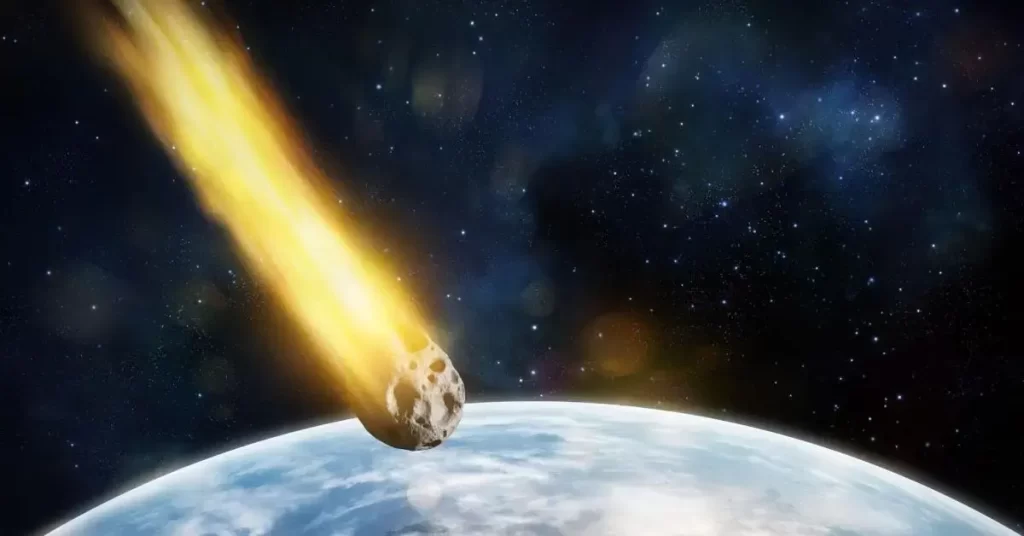NASA Ensures Earth’s Safety From Near Miss Asteroids With Its Watchful Eyes From The Jet Propulsion Laboratory
Between Wednesday and Sunday, Earth found itself in the cosmic crosshairs as five asteroids made close approaches. NASA, with its watchful eyes from the Jet Propulsion Laboratory in Pasadena, California, meticulously tracked these celestial wanderers, ensuring that despite their proximity, no immediate threat posed our planet.
Among these five asteroids, three stood out due to their remarkable size, resembling commercial airplanes in dimensions. The largest among them stretched an impressive 170 feet in length, showcasing the sheer scale of these cosmic travelers. However, despite their size, these asteroids were not on trajectories that would bring them crashing into Earth. NASA’s sophisticated tracking systems provided critical data, offering valuable insights into their orbits and ensuring accurate predictions about their future movements.
One particular asteroid, named 2023 QE8, drew attention as it prepared for a close encounter, hurtling within 945,000 miles of Earth on Sunday. This event marked its first orbital dance with our planet in two years, a reminder of the intricate cosmic choreography that governs our solar system. Although the term “close” might seem alarming in everyday contexts, in astronomical terms, this distance is significant, providing a safe buffer between the asteroid and Earth.
To comprehend the potential threat posed by asteroids, NASA relies on the expertise of its scientists and the advanced capabilities of the Jet Propulsion Laboratory. They employ a stringent criterion to identify asteroids as “potentially hazardous.” Any celestial object that ventures within 4.6 million miles of Earth, roughly 19.5 times the distance to the moon, falls under this category. These calculations, made with remarkable precision, allow scientists to assess the potential risk posed by these space rocks.
The Jet Propulsion Laboratory’s Asteroid Watch dashboard serves as a vital tool in this endeavor. It provides real-time data, including the date of closest approach, the approximate diameter of the asteroid, and its distance from Earth. The laboratory meticulously monitors any object larger than about 150 meters (492 feet) that approaches Earth within this defined distance, recognizing them as potential threats. This vigilant monitoring ensures that Earth’s inhabitants can continue their lives with confidence, even as these celestial travelers pass by.
In the vast expanse of our solar system, most asteroids find their place within the main asteroid belt, nestled between the orbits of Mars and Jupiter. However, some deviate from the norm, following paths that bring them into the inner solar system. These celestial nomads, known as near-Earth asteroids, captivate astronomers’ attention due to their proximity to our home planet. NASA’s continuous monitoring efforts enable scientists to track these asteroids, providing essential data to understand their behaviors and trajectories.
Among the asteroids that recently graced Earth’s neighborhood, one stood out in particular. Named 2023 QF6, this 68-foot-long space rock embarked on its inaugural journey near Earth, venturing within 1.6 million miles on Sunday. While its visit was a rare event, NASA’s Center for Near Earth Object Studies indicated that it might not be its last. The asteroid’s trajectory hinted at potential future encounters, underscoring the need for ongoing monitoring and research.
Before 2023 QF6’s arrival, another asteroid named 2021 JA5 made a close approach on Wednesday. Despite being smaller, measuring 59 feet in length, its trajectory brought it within 3.1 million miles of Earth. Following closely behind, two more asteroids, one comparable in size to a plane (2023 QC5) and the other akin to a bus (2020 GE), made their closest approaches on Friday. These events, while fascinating for astronomers, posed no immediate danger to Earth.
NASA’s dedication to understanding asteroids is evident in the vast amount of data collected over the years. Since the agency began detecting these cosmic wanderers, they have identified 32,412 asteroids up until August 31. Among these, more than 10,500 are larger than 460 feet, highlighting the diversity of asteroids in our solar system. Additionally, NASA has identified 853 asteroids larger than a kilometer, further enriching our understanding of these celestial bodies.
Remarkably, within the past year, 107 asteroids have passed closer to Earth than the moon, illustrating the dynamic nature of our cosmic neighborhood. To further enhance our knowledge, scientists estimate that approximately 14,050 asteroids, each at least 460 feet in length, are yet to be discovered. These undiscovered asteroids remain intriguing targets for astronomers, promising new insights into the formation and evolution of our solar system.
In a notable event earlier this year, a new meteorite was discovered, originating from asteroid 2023 CX1. This find, made in northwestern France, provided scientists with a rare opportunity to study materials from space up close. Meteorites, remnants of asteroids that survive the journey through Earth’s atmosphere, offer valuable clues about the composition of asteroids and the processes shaping our solar system.
As humanity continues to explore the mysteries of the cosmos, NASA’s unwavering commitment to tracking and understanding asteroids remains crucial. By unraveling the secrets of these celestial travelers, scientists gain valuable insights into the early solar system, planetary formation, and potential threats that could impact Earth in the future. Through meticulous observation and research, humanity stands prepared, equipped with knowledge to navigate the cosmic wonders and challenges that lie ahead.



